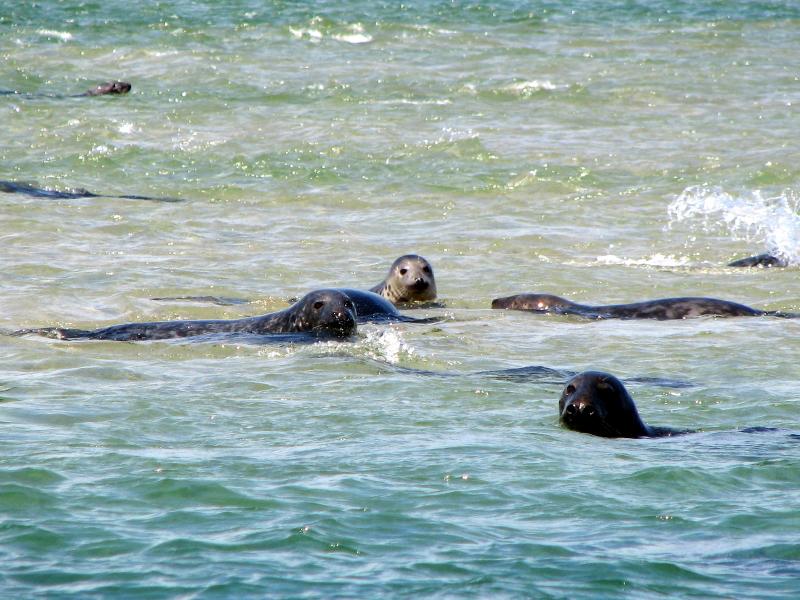Cuttyhunk Seal Cruises – An adventure in your own back yard! by Katie Houseman, Lloyd Center Educator/Naturalist
Join the Lloyd Center for the Environment for their last Cuttyhunk Seal Cruise of the season on April 13!
Each year around March and April, the Lloyd Center hosts seal cruises to Cuttyhunk Island in Buzzards Bay in cooperation with Cuttyhunk Ferry Company. Harbor seals and gray seals are the two most common species of seals seen in Buzzards Bay. Harbor seals are the smaller of the two types, growing up to about 5 feet and weighing up to 250 lbs. They are easily recognizable with their v-shaped nose and round head. These seals often take up what is referred to as the “banana position,” laying on rocks with their tail and head hoisted into the air.
Gray seals grow to be much larger at 8 feet and weighing in at up to 800 lbs. The gray seal also boasts a more horse-like snout and a w-shaped nose as opposed to the round shape of the harbor seal head. Both seals have mottled patterns which make it possible to identify individuals. Seals, like many marine animals, have countershading. This means they are dark on their backs and light on their bellies. Countershading helps many animals to blend in with their surroundings in the ocean, whether they are on the hunt or being hunted themselves.
Seals are pinnipeds, meaning they are fin-footed. The sub-order of pinnipeds consists of seals, sea lions and walruses. Although they may look similar, the biggest differences between seals and sea lions are that sea lions reside on the West Coast of the country and have external ear flaps and hind flippers for walking. Walruses are perhaps the easiest to differentiate with their large tusks and huge size, up to 2,200 pounds!
Seals are voracious semi-aquatic mammals. This means that although they hunt underwater and spend much of their lives at sea, it is also quite typical to see them lying on beaches or rocks sunning themselves. While on the hunt, seals have many special adaptations for life underwater. Seals have large eyes in comparison to their heads which allows them to see incredibly well with little to no lighting underwater as they feed on fish and crustaceans. Using their long whiskers, seals can track the position of fish in the water. Though they may look adorable, seals are carnivorous predators. Both harbor and gray seals feed on many local fish species including cod, herring, sand lance, mackerel and flounder in addition to squid and crabs. Seals are also covered in a thick layer of blubber which both insulates in frigid Atlantic water and provides a source of backup food so they do not need to eat every day.
Since seals are mammals, they share typical mammalian traits - they are warm blooded, have hair on the outside of their bodies, breathe air, give birth to live young, and provide milk to those young. In fact, seals are currently entering their breeding season which may last through the summer and even into fall! It is common to see pups with their mothers or even alone on the beach. For the first month, pups rely solely on their mother’s milk. Female seals will often forage for hours at a time while their young rest on the beach. After 4-6 weeks, seal pups are weaned and will leave their mother to begin foraging on their own.
Seals are truly captivating marine mammals, from their adorable whiskered faces to their intimidating predatory instincts. Join Lloyd Center naturalists on a Cuttyhunk seal cruise and see for yourself just how incredible pinnipeds are!
Join the Lloyd Center for the Environment on April 13 from 10:00am – 2:30pm for a Cuttyhunk Seal Cruise.














